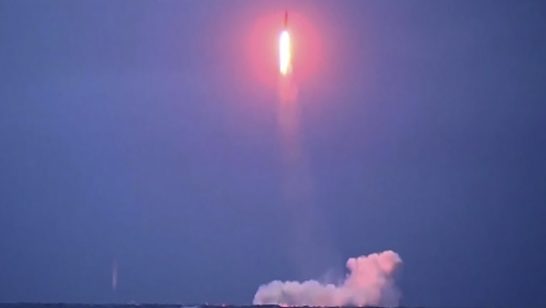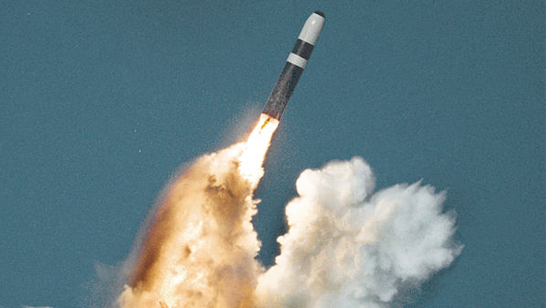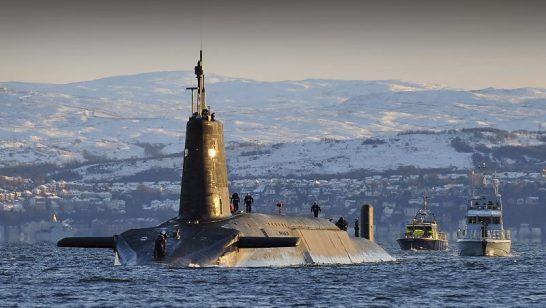
Given the enormous humanitarian and other consequences of nuclear weapon explosions, the importance of minimising and eliminating the risks associated with these weapons cannot be overstated. Nuclear risk reduction currently receives much international attention and a higher degree of political convergence seems to exist on this issue. However, a closer look reveals that perspectives differ within the international community of what constitutes nuclear risks and, consequently, what nuclear risk reduction should entail. Views will vary on whether nuclear risks originate primarily from the possession of nuclear weapons, use scenarios, intent, the safety and security of nuclear weapons, the prevention of accidents, from policies and doctrines or from strategic nuclear risks.
In the years leading up to the adoption of the Treaty Prohibiting Nuclear Weapons (TPNW) on 7 July 2017, non-nuclear weapon States focused increasingly on the risks stemming from the possession of nuclear weapons and the practice of nuclear deterrence per se, rather than from the actions of individual States. Such a focus provides an aggregated view of the nuclear weapons practices of all nuclear-armed States and the resulting risk for all of humanity. This aggregated view on nuclear risks defines the perspective of most non-nuclear weapon States and is enshrined in the preamble of the TPNW.
For non-nuclear weapon States that supported the TPNW, the grave humanitarian and other consequences that would result from nuclear explosions, are the risks to which they, too, are exposed, against their will and outside their control. These risks result from the possession of nuclear weapons and the security policies that are based on nuclear deterrence that are pursued by nuclear armed States and States that rely on extended nuclear deterrence. The risks could materialise through the deliberate use of nuclear weapons, a miscalculation triggering a nuclear confrontation, or indeed any form of accident. Not only parties to a potential nuclear conflict bear those risks, but also other States, innocent bystanders to a conflict or an accident. Given the conflicts and tensions involving nuclear-armed States with multiple deterrence relationships, the potential for nuclear escalation is considerable. Nuclear-armed states’ threat perceptions are generally intertwined and mutually reinforcing. Overconfidence in the stability of nuclear deterrence or the perceived need to demonstrate its credibility at all times could lead to overly aggressive rhetoric and reckless nuclear posturing. This has been observed more frequently in recent years with the mutual threats of inflicting “flames and ashes” versus “fire and fury” that were exchanged between North Korea and the US in 2016 and 2017 as the most extreme examples.
In the process leading up to the TPNW, non-nuclear weapon States also increasingly understood the multiple examples of past “near misses” that demonstrate the worrying degree to which good fortune, or, in the words of Robert McNamara, “dumb luck” has prevented nuclear war. While the probability of these situations occurring and the risks materialising is difficult to assess and may be considered low, the risks exist and are certainly very serious given the scale of the consequences.
Non-nuclear weapon states supporting the TPNW, therefore, see nuclear deterrence as a high-risk practice not only due to the grave consequences of nuclear weapons but also because it is practised by humans. Relying on machines and processes designed by humans, nuclear deterrence is not immune to human error. The risks are inherent in possessing and maintaining nuclear weapons. One may assess the actions and the behaviour of one State or one leader in a nuclear-armed State to be more risk-prone than that of another. However, from the risk perspective enshrined in the TPNW, these differences are not the central issue. The collective nuclear weapons policies and actions of all nuclear-armed states and their allies create an aggregated and interconnected set of global nuclear risks for all humanity. From this perspective, nuclear risks lie in the fact that the practice of nuclear deterrence is too precarious, and the consequences of these weapons are too catastrophic and existential.
Risk reduction from this perspective must, thus, reduce the likelihood of any nuclear weapons explosions, whether intentional, inadvertent, unintentional or from accidents owing to human or technical reasons. In addition to progress on nuclear disarmament and the elimination of nuclear weapons, which is the risk-reduction gold-standard, non-nuclear weapon States request measures that take nuclear weapons as far away from any use or accident as possible. Such steps include de-alerting, de-targeting, taking weapons out of operational service, no “first use” commitments, further reductions of stockpiles, more transparency about postures and actual use scenarios, confidence-building measures and political and legal steps aimed at strengthening the nuclear disarmament and non-proliferation regime. In the eyes of many non-nuclear weapon States, the findings of the Humanitarian Initiative, which led to the TPNW, have made such measures significantly more urgent.
Nuclear-weapon States advocate a more limited perspective of risk reduction. Their views on nuclear risks are conditioned by the primacy of maintaining “strategic stability”. Nuclear risks are understood as coming from other, potentially adversarial, nuclear-armed States and the risks are assessed as regards their possible impact on the strategic relationship between those States. In this rendering, risks stem primarily from a lack of knowledge of the other’s nuclear weapons capabilities, intent, and policies, or doubts about decision making processes or security and safety procedures. This perspective has a significant bearing on how risk reduction measures are assessed. It gives dominance to “strategic risk reduction”[i] understood as countering risks that could undermine nuclear deterrence relationships. Consequently, risk reduction measures are geared towards avoiding or managing crises and achieving a better understanding of the intentions of adversaries, so as to maintain more stable and less risky deterrence relationships. In short, the focus of this perspective of risk reduction is to make nuclear deterrence work better, rather than consider the risks of the practice of nuclear deterrence itself.
This limits the range of nuclear risk reduction measures considerably. Measures that restrict the ability to use nuclear weapons, such as de-alerting, de-targeting, limiting nuclear weapons postures, a “no first use” declaration or removing nuclear weapons from operations are assessed as having a negative impact on the credibility of nuclear deterrence and not, or not sufficiently, pursued. Risk reduction measures are, thus, considered only insofar, as they do not impact the nuclear deterrence calculus, which in itself is the origin of nuclear risk. This demonstrates the inherent contradiction and conundrum posed by the necessity to maintain nuclear weapons in a manner that demonstrates readiness and resolve to always use them, as “required” for the credibility of nuclear deterrence, and a more comprehensive approach to address nuclear risks aimed at ensuring that they will never be used, intentionally or unintentionally, or through human or technical error.
Non-nuclear weapon States will certainly support all measures aimed at reducing strategic risks, as outlined in the recent commentary on this issue by Adam Thompson, Goran Svilanović and Ahmet Üzümcü. However, nuclear armed States have yet to engage meaningfully with non-nuclear weapon States on the risks to all humanity stemming from the possession of these weapons and the collective practice of nuclear deterrence.
A good place to start would be to take the concerns expressed in the TPNW regarding the humanitarian consequences and risks associated with nuclear weapons seriously and cease the politically motivated criticisms of this treaty and its supporters. This should lead to a transparent, concrete, and inclusive discussion that weighs the consequences and risks of nuclear weapons to all humanity against the assumed security and stability benefits of nuclear deterrence. The Humanitarian Initiative and the TPNW have opened the door for such engagement and represent a clearly expressed expectation for such a discussion to take place. This is the nuclear risk reduction conversation that most non-nuclear weapon States wish to conduct and the perspective that also underpins the TPNW. Nuclear risk reduction undoubtedly has tremendous potential to build bridges in the contested nuclear weapons discourse. A focus on “strategic risks” only, without also addressing this more profound dimension of nuclear risks, would remain incomplete, limited and ultimately undermine the bridge-building potential of the all-important nuclear risk reduction issue.
[i] See for example para 22 of the “G7 Statement on Non-Proliferation and Disarmament” of 6 April 2019, available at http://www.g8.utoronto.ca/foreign/190406-disarmament.html
The opinions articulated above represent the views of the author, and do not necessarily reflect the position of the European Leadership Network (ELN) or any of the ELN’s members. The ELN’s aim is to encourage debates that will help develop Europe’s capacity to address pressing foreign, defence, and security challenges.
Image: Wikimedia



